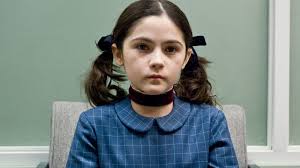Synopsis: The story of the hunt for notorious Gangster John Dillinger by the Federal Government takes place in Public Enemies.
Release Date: July 1, 2009 MPAA Rating: PG-13
Genre(s): Gangster, Crime
Film Review
 Production
Production
Walking into Public Enemies, you may be expecting a fast-paced, thrill-filled, gangster movie. This is not how it is presented. It is actually a very slowly paced film that is more about character development and romance than action or more specifically, robbing banks. It is refreshing to see more of a human side to a story such as this and not just a glorification of a lifestyle full of crime and dangerous circumstances. Essentially, Public Enemies is a biographical and contemplative look at the workings of a man who was the most wanted in America while being caring, compassionate, and remorseful. Public Enemies brings a level of depth to John Dillinger (Johnny Depp) that is unexpected, and well received.
 Writing
Writing
By far one of the best features of Public Enemies is the script. The writers have created a screenplay that is not heavy on dialogue, but full of story. Each line is carefully constructed, thought out, and pertinent to the story as a whole or the situation directly at hand. There is no excess of dialogue between characters or filler during scenes that would in other films be overdone with witty lines or overly dramatic sentimentality. Public Enemies relies on the actors to portray emotion without saying a word, and the action on screen to speak for itself. When words are spoken you pay attention, as you soon realize when someone is speaking it must be important.
 Cinematography
Cinematography
The cinematography in Public Enemies is very unique. You are constantly being shown the action from canted angles and awkward framings. Nothing ever seems to appear normal as even many of the close-ups are framed disproportionately. In addition to this the placing of the camera far to the left or right of characters, behind a tree, off to the side, and varying other places gives the impression that you, as the viewer, are peeking in on the moments as they occur. It appears that you are not intended to be “present” as the story unfolds but a mere voyeur; seeing something you are not meant to witness but given the opportunity regardless.
 Score and Soundtrack
Score and Soundtrack
Public Enemies uses silence as a key element to its score. As the score plays in the background, so quiet at times you may not even notice, it will suddenly fade to absolute silence. Only the diegetic sounds can be heard and even they are barely audible. Instead of choosing to use music as a method of enhancing the suspense, danger, or romance, Public Enemies uses silence as a way to garner this emotion completely through the mind of the viewer. One may say the filmmakers are not ‘cheating’ your emotional connection for it is completely up to you how you react to what is happening on screen – not the musical cues decision. Interested?
 Action Sequences
Action Sequences
Yes, they rob banks. Yes, there are gunfights and some car chases. No, they are not very thrilling or even very long. The majority of Public Enemies deals with the personal connections of John Dillinger and the inner workings of the FBI, led by Christian Bale as Melvin Purvis, in their attempt to catch him. Any scene that may come across, or be expected by the viewer, to be full of action lacks any anticipation of the moment and fails to build momentum. They are slow and dramatic, not excessive. This is not an action movie and it does not try to be one at any time.
Cast and Crew
- Director(s): Michael Mann
- Producer(s): Ronan Bennett, Michael Mann, Ann Biderman
- Cast: Christian Bale (Melvin Purvis), Johnny Depp (John Dillinger), Channing Tatum (Pretty Boy Floyd), Billy Crudup (J. Edgar Hoover), Marion Cotillard (Billie Frechette), Giovanni Ribisi (Alvin Karpis), Emilie de Ravin (Anna Patzke)
- Editor(s): Jeffrey Ford
- Cinematographer: Paul Rubell
- Production Designer(s): Dante Spinotti
- Costume Designer: Colleen Atwood
- Country Of Origin: USA


